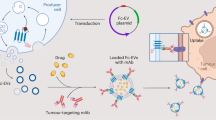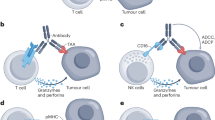Abstract
Although sheep erythrocytes do not activate the alternative complement pathway (ACP) of human serum, the erythrocytes gain a capacity to activate human ACP following removal of membrane sialic acid by neuraminidase treatment1–3. Therefore, asialoglycoconjugates generated from sialosylglycoconjugates by neuraminidase treatment might be responsible for this type of ACP activation on cell membrane4. Alternatively certain sialosylglycoconjugates on the cell membrane might restrict the activation of ACP and removal of the terminal sialic acid from the glycoconjugates would abolish this restricting capacity and result in activation of the ACP on the cell membrane5. To determine which of the above two possible mechanisms is the case, we used a liposome model membrane in which glycolipids could be artificially inserted, and our results suggest that the latter of the two possible mechanisms is the case.
This is a preview of subscription content, access via your institution
Access options
Subscribe to this journal
Receive 51 print issues and online access
$199.00 per year
only $3.90 per issue
Buy this article
- Purchase on Springer Link
- Instant access to full article PDF
Prices may be subject to local taxes which are calculated during checkout
Similar content being viewed by others
References
Lauf, P. K. J. exp. Med. 142, 974 988 (1975).
Fearon, D . T. Proc. natn. Acad. Sci. U.S.A. 75, 1971–1975 (1978).
Pangburn, M. K. & Mller-Eberhard, H. J. Proc. natn. Acad. Sci. U.S.A. 75, 2416–2420 (1978).
Pangburn, M. K., Morrison, D. C., Schreiber, R. D. & Mller-Eberhard, H. J. J. Immun. 124, 977–982 (1980).
Kazatchkine, M. D., Fearon, D. T. & Austen, K. F. J. Immun. 122, 75–81 (1979).
Yasuda, T., Naito, Y., Tsumita, T. & Tadakuma, T. J. immun. Meth. 44, 153–158 (1981).
Okada, N., Yasuda, T., Tsumita, T. & Okada, H. Immunology 45, 115–124 (1982).
Pangburn, M. K., Schreiber, R. D. & Mller-Eberhard, H. J. J. exp. Med. 154, 856–867 (1981).
Nicol, P. A. E. & Lachmann, P. J. Immunology 24, 259–275 (1973).
Whaley, K. & Ruddy, S. J. exp. Med. 144, 1147–1163 (1976).
Fearon, D. T. Proc. natn. Acad. Sci. U.S.A. 76, 5867–5871 (1979).
Fearon, D. T. J. exp. Med. 152, 20–30 (1980).
Iida, K. & Nussenzweig, V. J. exp. Med. 153, 1138–1150 (1981).
Okada, H., Tanaka, H. & Okada, N. Immunology (submitted).
Author information
Authors and Affiliations
Rights and permissions
About this article
Cite this article
Okada, N., Yasuda, T. & Okada, H. Restriction of alternative complement pathway activation by sialosylglycolipids. Nature 299, 261–263 (1982). https://doi.org/10.1038/299261a0
Received:
Accepted:
Issue Date:
DOI: https://doi.org/10.1038/299261a0
This article is cited by
-
Structural basis for sialic acid–mediated self-recognition by complement factor H
Nature Chemical Biology (2015)
-
The alternative pathway of complement
Springer Seminars in Immunopathology (1984)
Comments
By submitting a comment you agree to abide by our Terms and Community Guidelines. If you find something abusive or that does not comply with our terms or guidelines please flag it as inappropriate.



